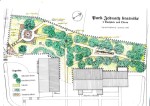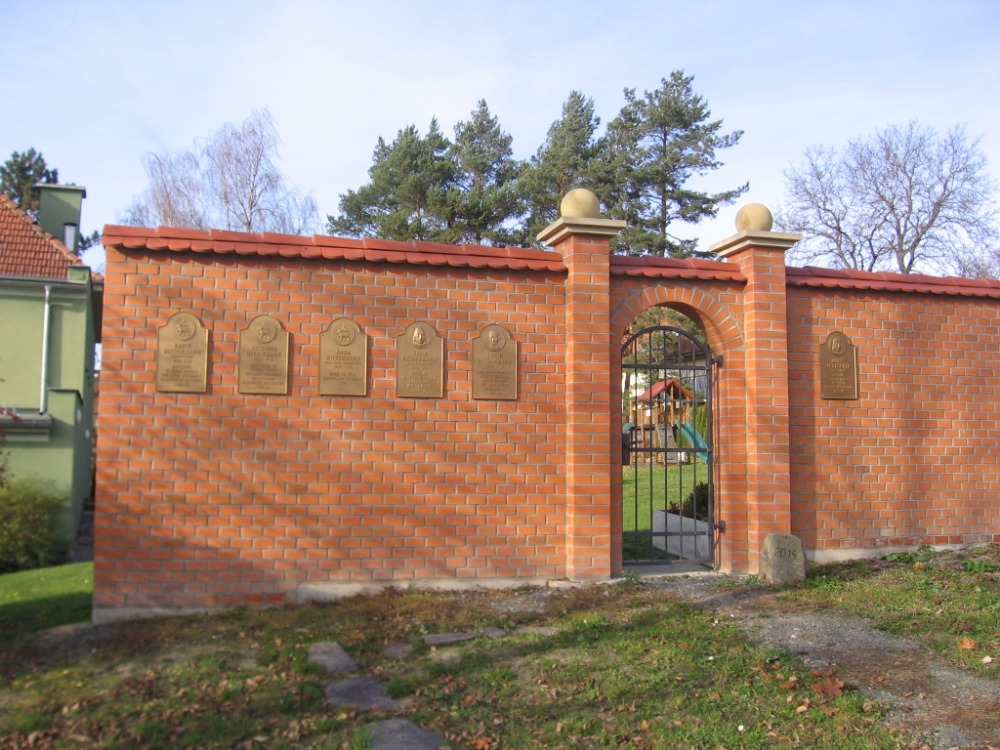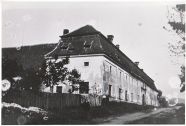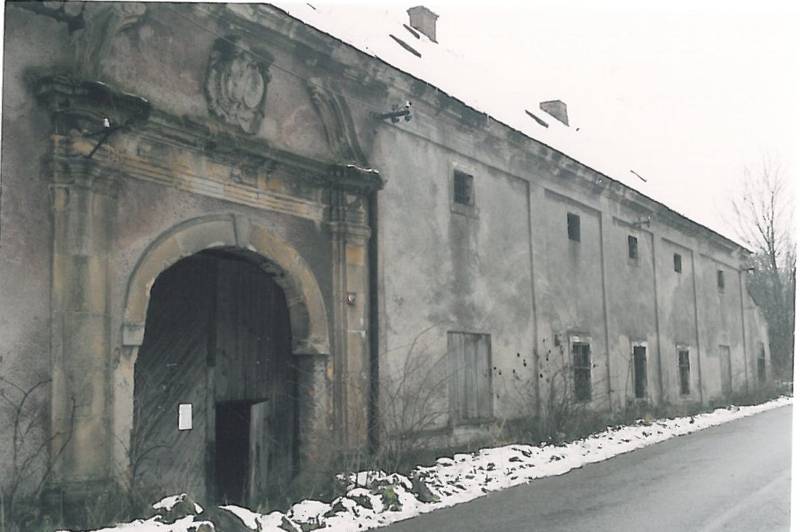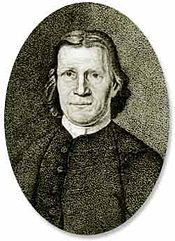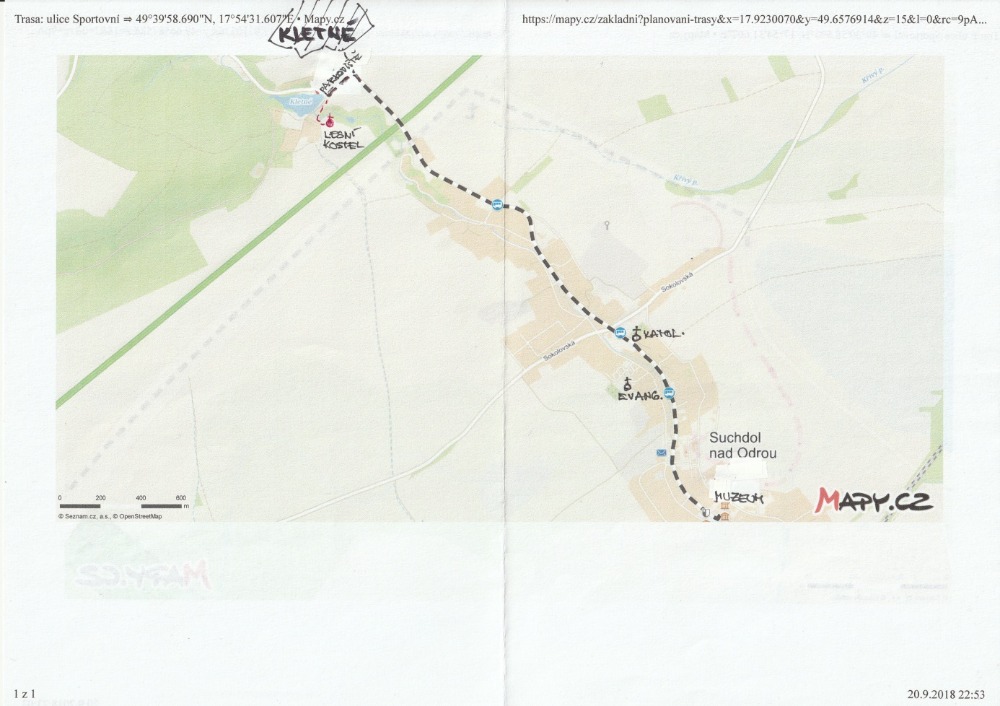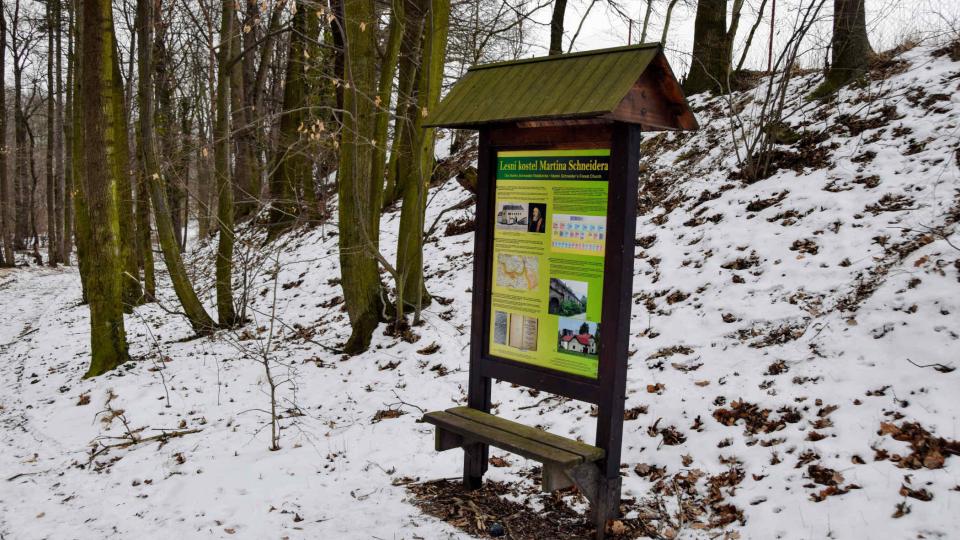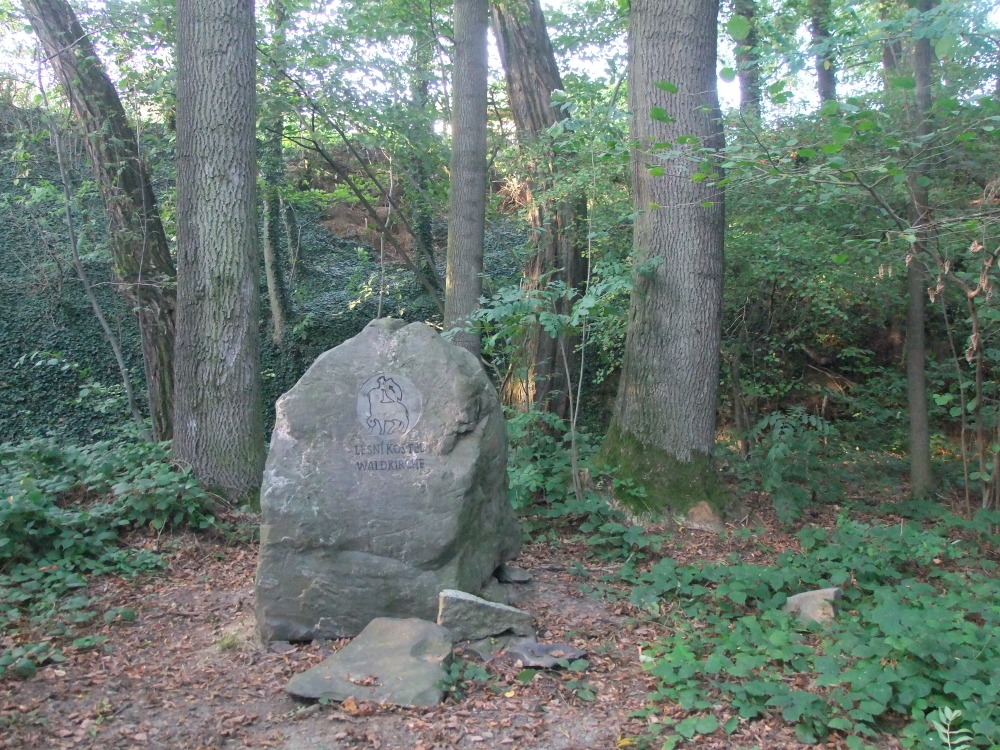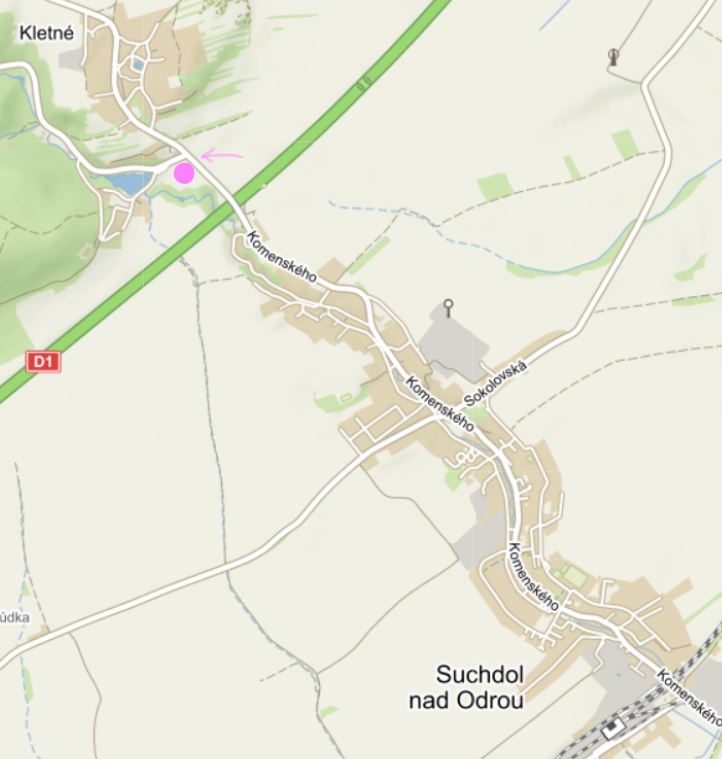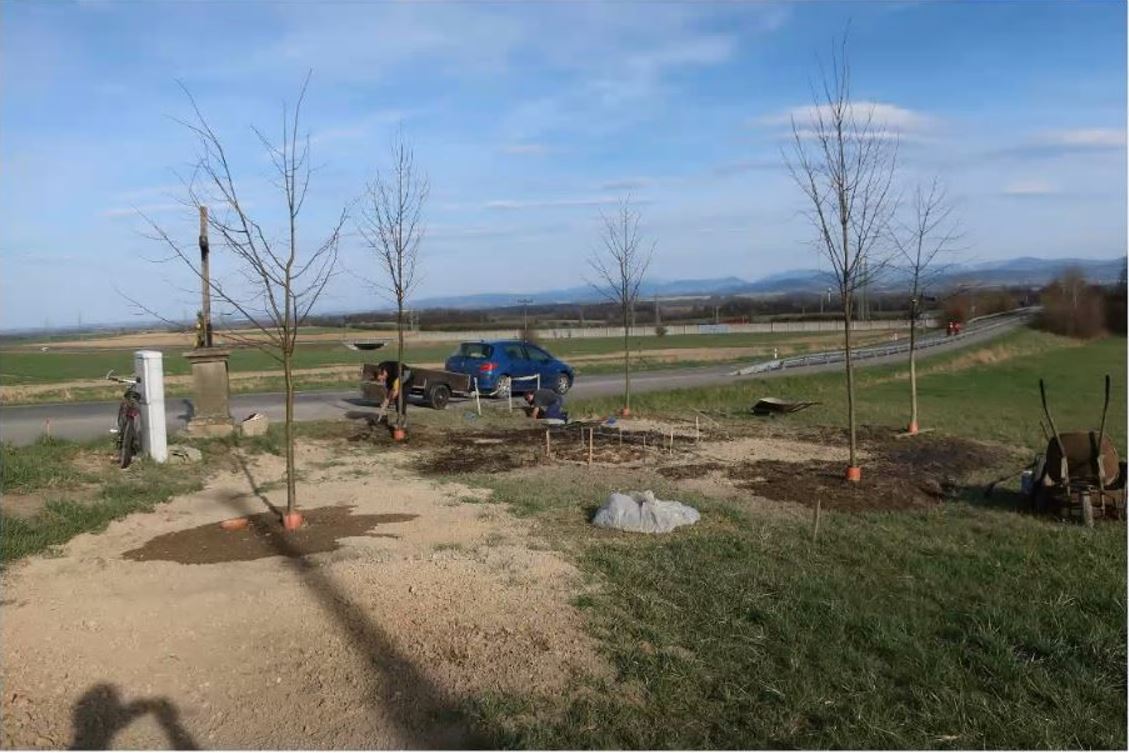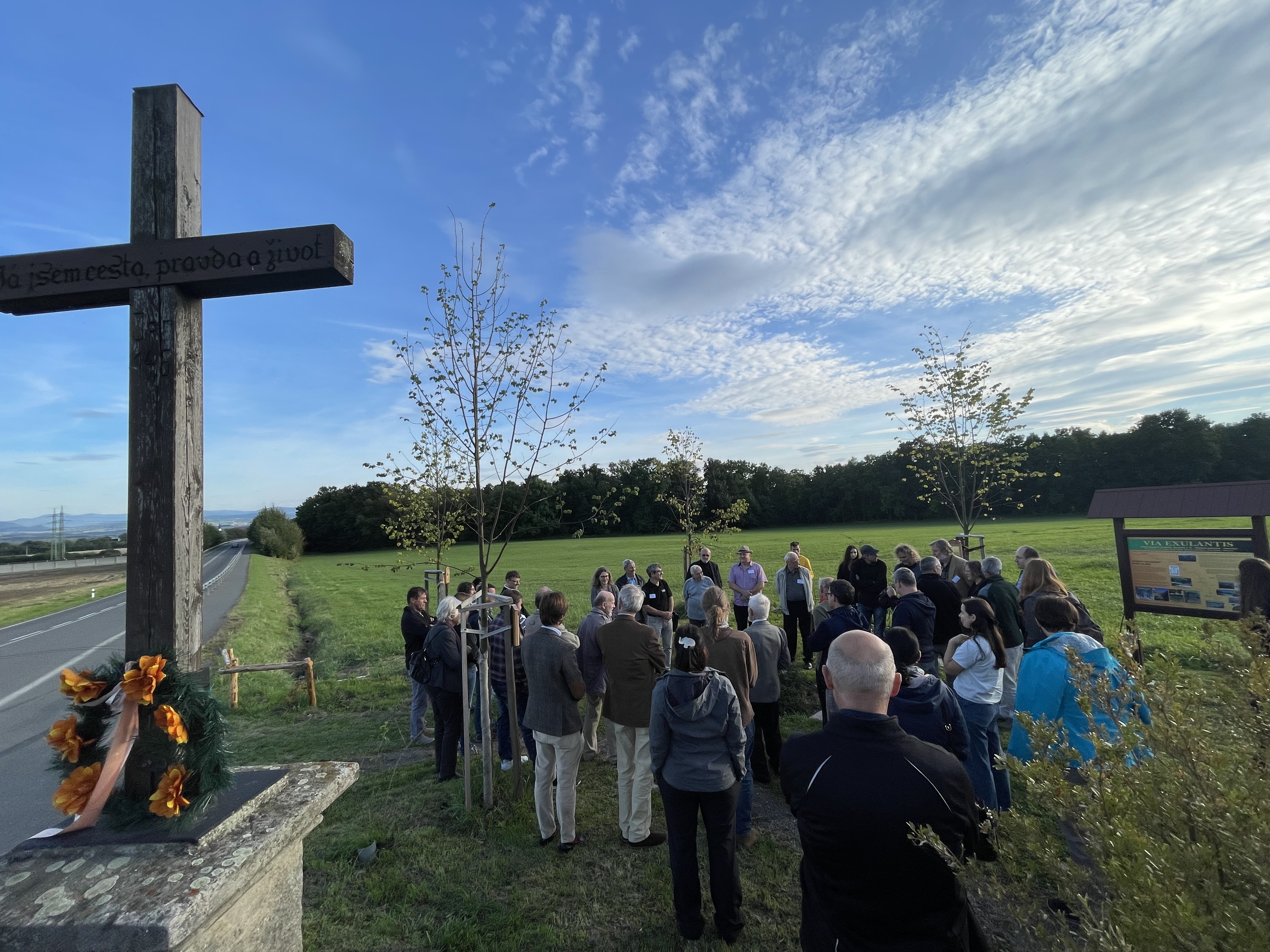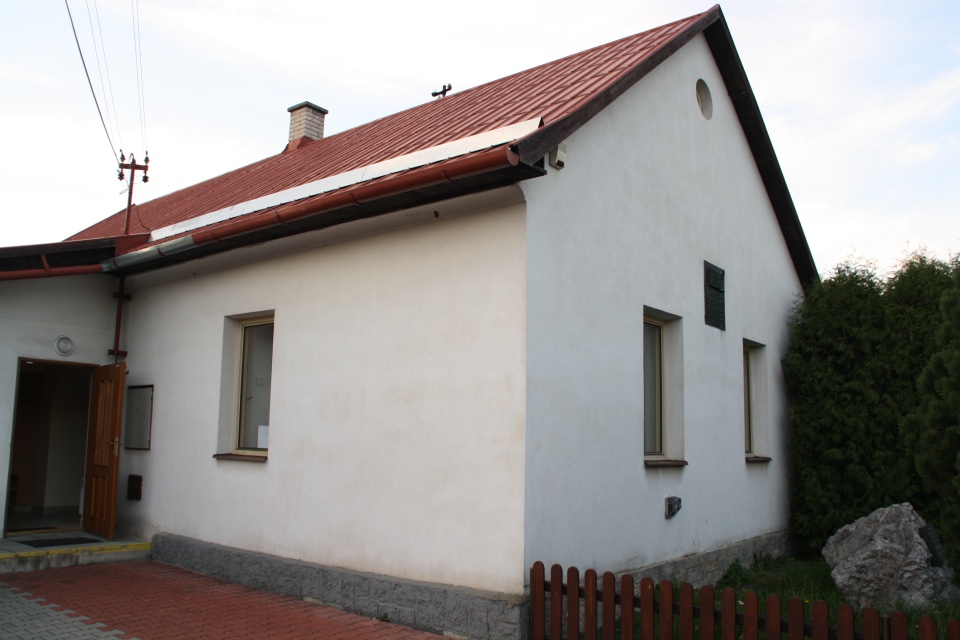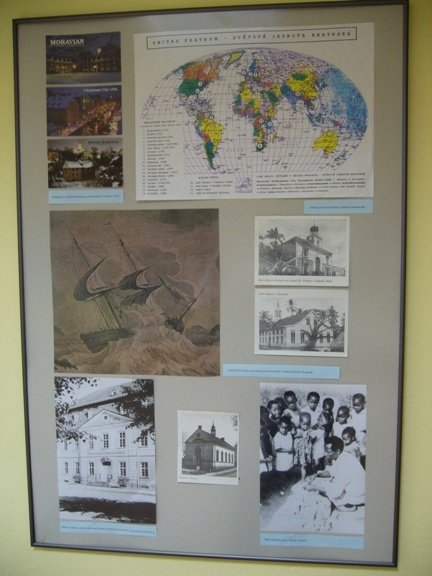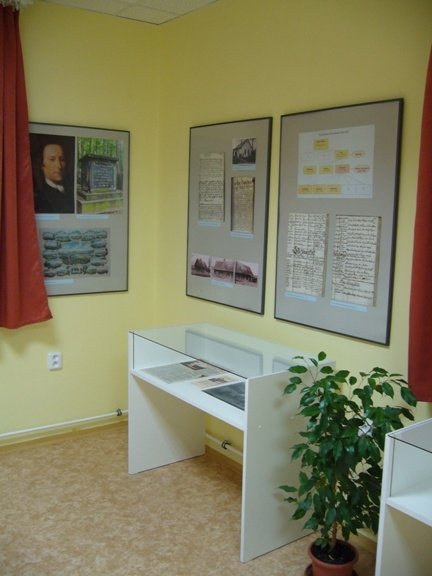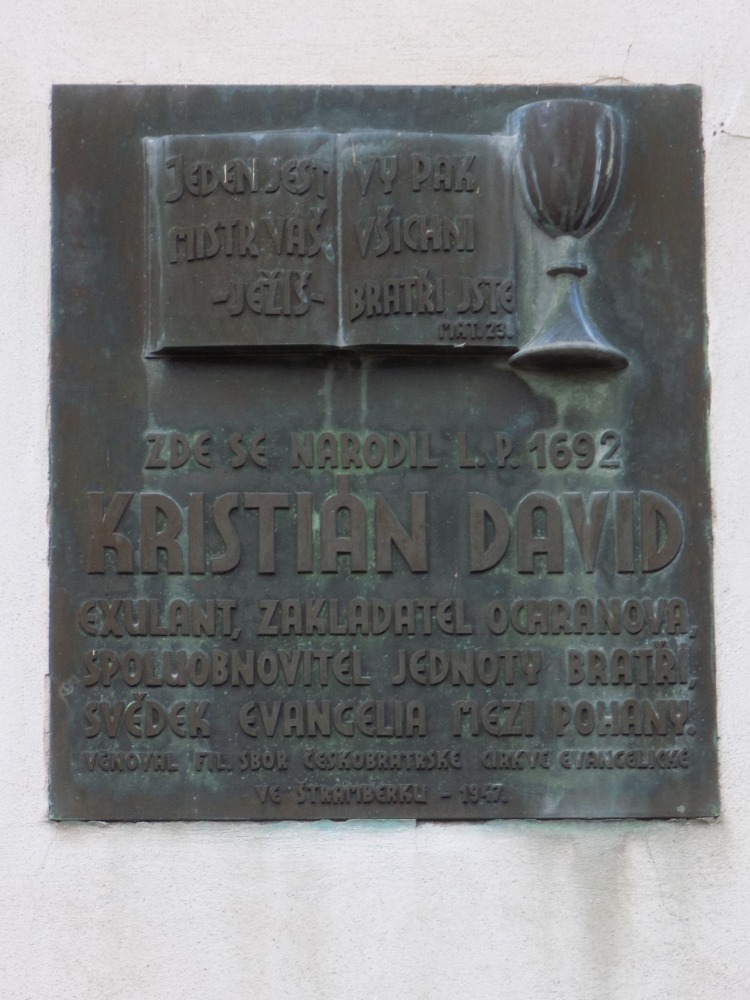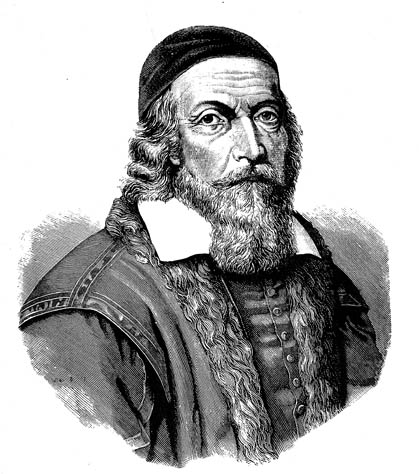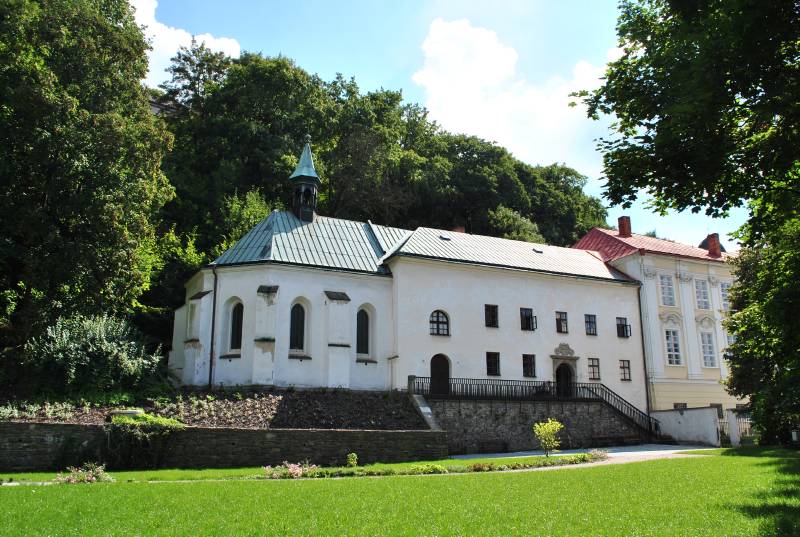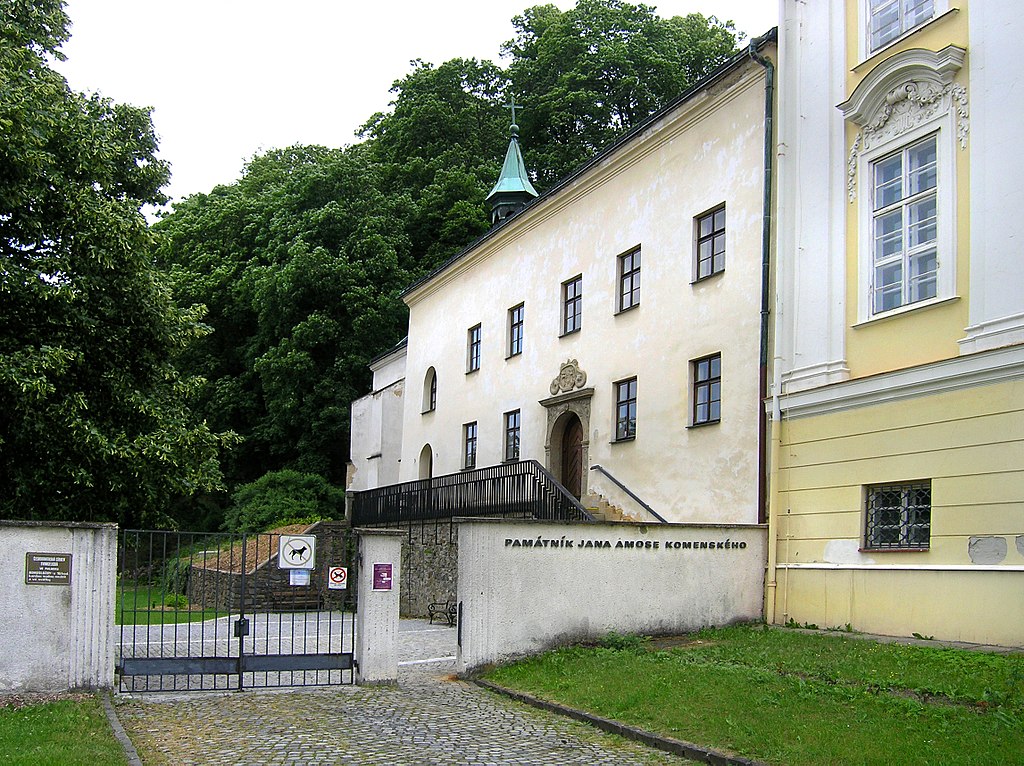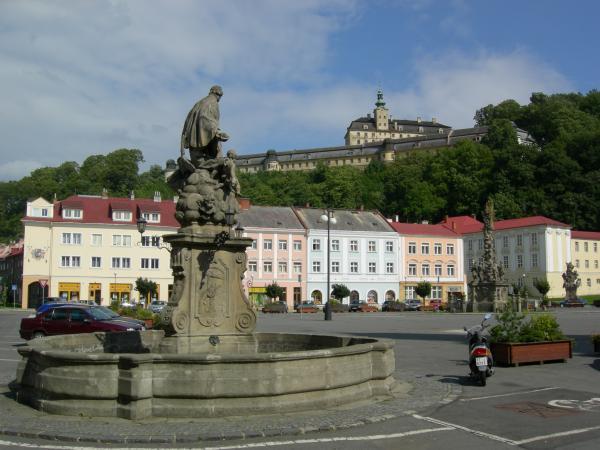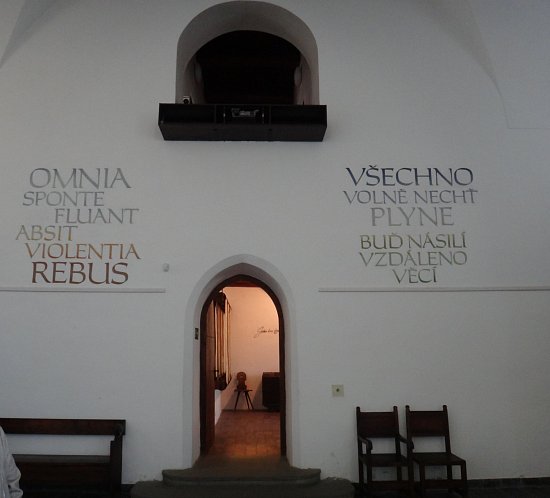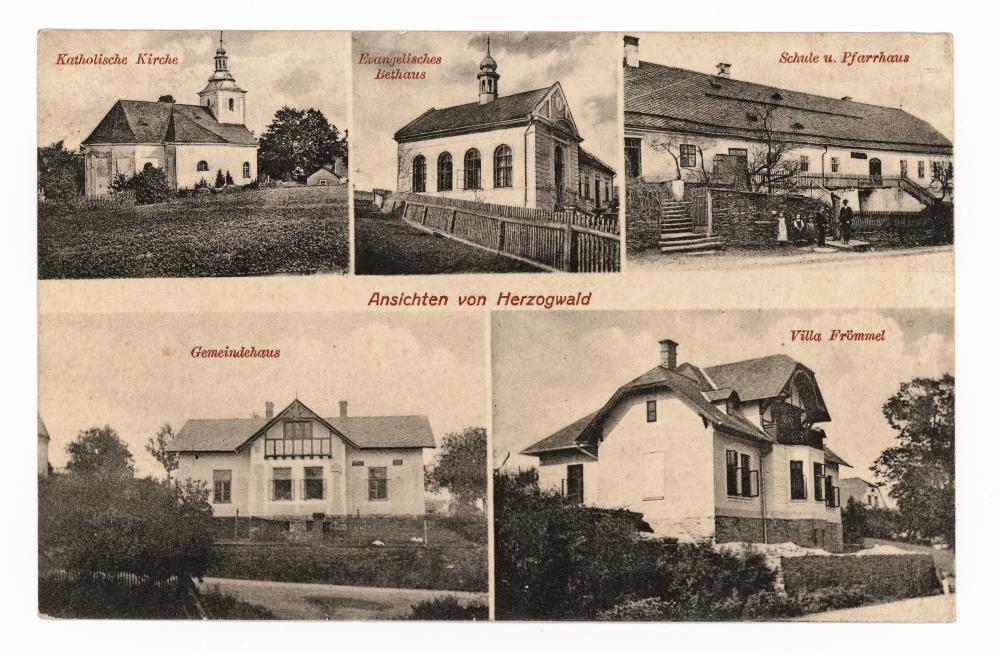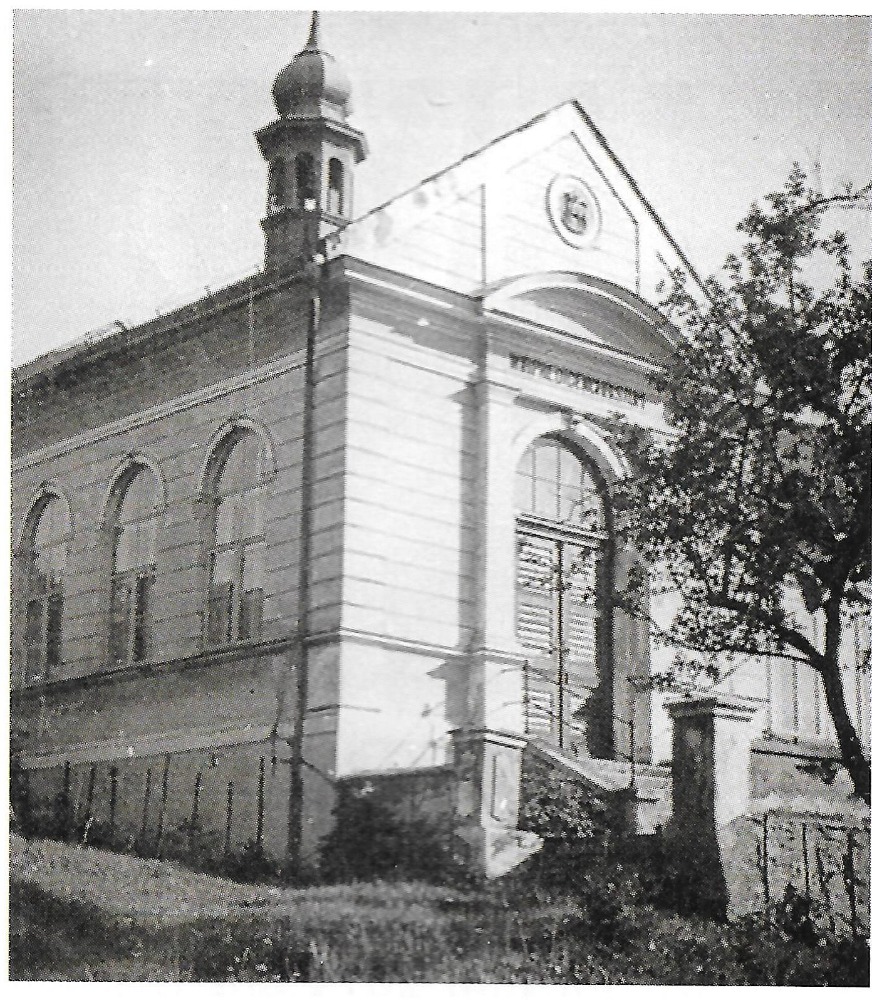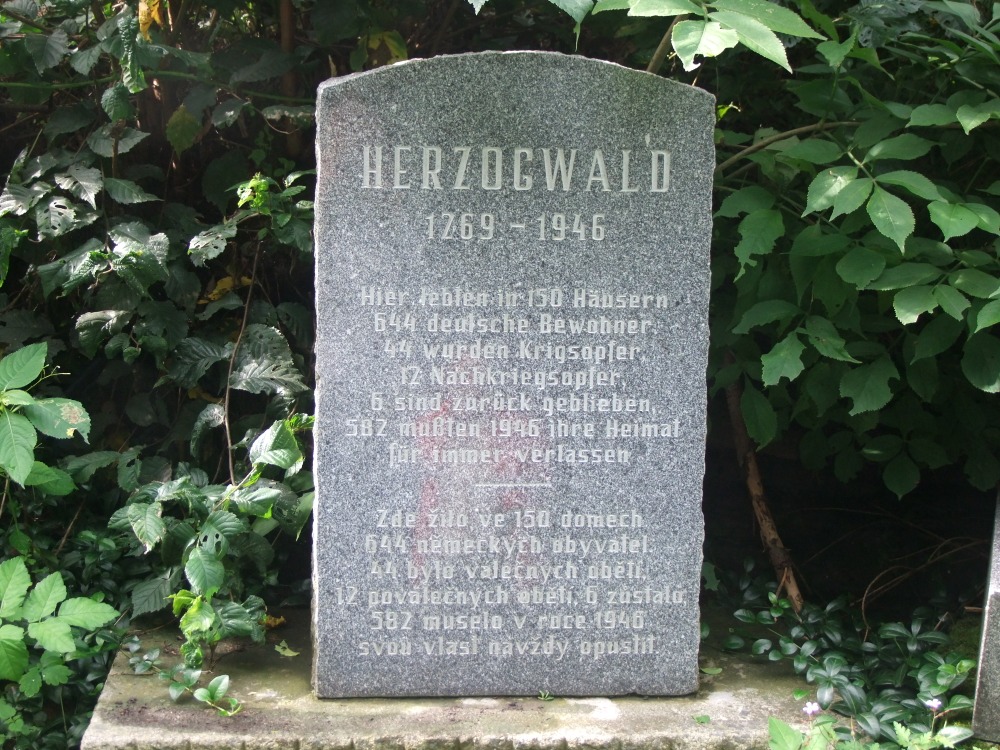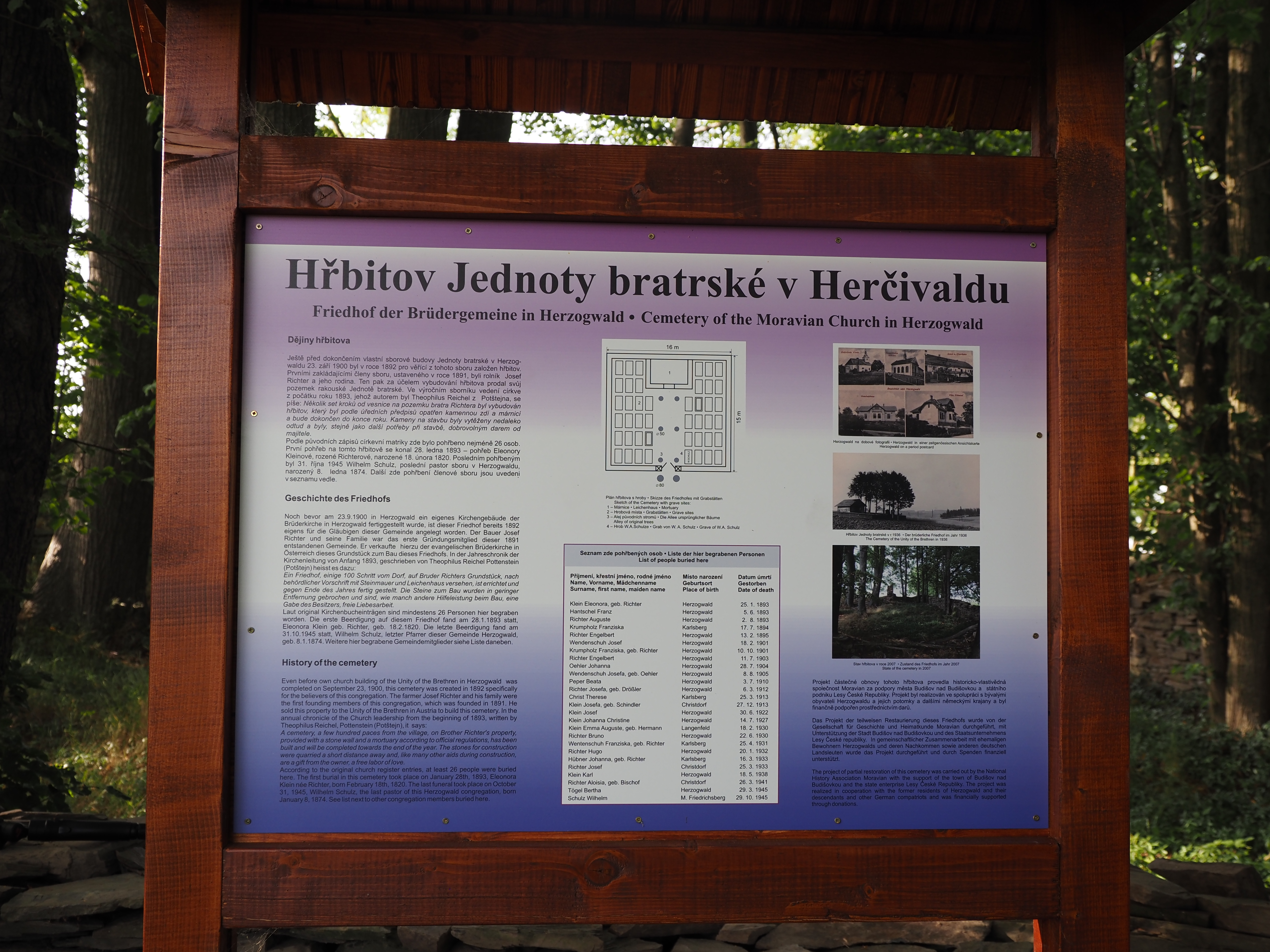Memorable places of the Moravian Brethren in Suchdol n.O.
and surroundings
The Park of the Moravian Brethren...
Birthplace of David Zeisberger...
Forest Church of Martin Schneider...
Rose Glade...
Birthplace of Christian David in Ženklava...
Monument of J.A.Comenius in Fulnek...
Herzogwald...
The Park of the Moravian Brethren
Welcome to a museum in the open air! The Moravian Brethren left no material sights in Suchdol, therefore we remind of them at least by means of trees from places where they lived and worked.
The Park of the Moravian Brethren was founded in 1996. It is situated opposite to the Museum of Moravian Brethren, at that place where the house of David Nitschmann
(the first bishop of Unity of the Brethren) stood. We plant trees there coming from places where people from Suchdol lived and worked.
do not possess such a large land, we plant the trees around the Museum building too.
Every tree is provided with a stone slab with the name and the year of the tree’s receiving. In this way a unique collection having no parallel was created. The Park contains already about 30 trees.
In 2014 a commemorative „Wall of Moravian Brethren“ was bulit. At some occasions
we place memorial plaques of Moravian Brethren and Sisters, who set out for mission journeys or became significant in another way, on the wall.
Finally 58 memorial plaques will be placed there. They are being produced gradually, because we have to gather 12200 CZK to produce one plaque. If you would like to become a sponsor of a memorial plaque, you could become also its owner and its “godfather“.
The place where the house of David Nitschmann (the first bishop of Unity of the Brethren) stood, is marked by stones on the lawn now. In the middle of the Park a copy of Kleinschmidt’s lamp was raised. The original one showed the way to the Eskimos in Godtháb in Greenland during polar nights, so that they could get safely to the mission building (our lamp is powered by solar energy).
In the front part, at the place of honour there is a lime tree from Herrnhut which was planted by a delegation of Herrnhut at the time of foundation of the Park. Then other trees from Europa follow. At the crossroads there is a weeping willow which dominates the Park. This tree comes from the village Kunewald (now Kunín), where the seat of Kunewald district was and some people were kept in prison there. As a reminder of this circumstance there is a bench in form of a prison log there.
At the end of the Park there are trees reminding places where David Zeisberger, “apostle to the Indians“, lived and worked. One of those trees was planted by Delaware Indians delegation from New Fairfild. The tree coming from Goshen in Ohio reminds us the place, where Zeisberger is entombed.
Birthplace of David Zeisberger (Horní dvůr)
The birthplace of David Zeisberger is a large farmyard with the alliance coat of arms
of Harrachov-Lichtenstein above the entrance. It is a frequent destination for visitors
who want to visit the places where the Moravian Brethren came from. This is the so-called Upper Court (Horní dvůr). It is located in Suchdol nad Odrou No. 115 on the left
by the road towards village Kletné (the last house). During the Thirty Years' War, it was bought in 1636 by Lorenz Zeisberger from nearby village Kunčice near Fulnek.
His descendant David Zeisberger (junior) was born here on Good Friday morning,
March 2, 1721.
David's entire family fled to Herrnhut in 1726 when he was only five years old.
In 1736, his parents left for Georgia in North America, but David remained in Europe and studied in the Netherlands. After finishing his studies and returning to America, he moved together with his parents to Pennsylvania.
In 1741, he co-founded the settlement of Bethlehem, an important center of the Unity of the Brethren. He then began missionary work among the Indians and defended their rights against the white oppressors.
David Zeisberger belonged to those Moravians who in their time formed the history
of the "New World".
He founded about 13 Indian settlements - Brethren's congregations. The history of the USA writes about him as the Apostle of the Indians. Zeisberger was fluent in several Native American languages and created also a number of literary works.
These include biblical translations, songs, catechetical and general educational materials.
He also wrote grammar studies and dictionaries that presented Native American languages with English and German equivalents. Parts of his dictionaries
and his manuscript "History of the North American Indians" written in 1779-1780 were published. His life destinies became drafts for novels and short stories about the Wild West and for historical studies.
He died on November 17, 1808 in the settlement of Goshen in Ohio, where he is also buried.
A more detailed report on his life and work can be found, for example
at this
link ...
Forest Church of Martin Schneider
The Forest Church of Martin Schneider is located in the gorge of the Kletenský potok stream between the motorway and the Kletná reservoir near Suchdol nad Odrou.
It is
a place where secret evangelicals met in a time of religious oppression. It was after J.A.Comenius had to leave Fulnek in 1621 and the people here were left without a preacher and a spiritual administrator. Therefore, preachers from Uherská Skalice, located in today's Slovakia, came here secretly.
In Suchdol they found refuge with Martin Schneider, who, in a way, replaced Comenius and other preachers of the Unity of the Brethren. Schneider not only secretly kept these auxiliary preachers, but he also taught children and young people according to the catechism having been written and sent to Suchdol by Comenius himself. A replica of the forest place of secret assemblies was
built by members of the Moravian association in 2007.
At present, the center of this forest church is a special stone resembling an altar, on which there is the inscription "Forest Church Waldkirche" and a picture of a Lamb with
a banner - the emblem of the Unity of the Brethren (Christ crucified and risen).
For tourists there is an information board, reminiscent of the history of this place.
Every year, always on the third Sunday in September afternoon (and also on ceremonial occasions, for ex. during the Moravian International Conferences), short church services are held here. They are similar to those gatherings that used to be here at that time in the 17th century.
Rose Glade
Rose Glade Memorials are traditionally known in our country as places where, according to legend, exiles said goodbye to their homeland and specific wild roses grew out of their tears. The name Rose Glade was therefore also chosen for the memorial place where the first exiles - the Moravian Brethren - said goodbye to Suchdol on May 2, 1724.
There were five young men, three of whom had the same name - David Nitschmann - and could be recognized from one another by their nick-names: David Nitschmann
"The Carpenter" (1695-1772) - later the first bishop of the renewed Unity of the Brethren, David Nitschmann "The Syndic" (1703-79),
David Nitschmann "The Confessor" (1696-1729, died in prison). The others were Johann Teltschik (1696–1764) son of the mayor and Melchior Zeisberger (1701–81) son of a free farmer from the Upper Court.
A difficult journey awaited them to the town of Herrnhut in Saxony, which was founded
in 1722 on the estate of Count Zinzendorf by a carpenter from Ženklava (Senftleben) Kristian David. In Herrnhut, everyone of them later took an important position, which is why history refers to them as the "Five Pillars of the Church." David Nitschmann "The Syndic" describes parting from his homeland in his diary as follows:
"At about 10:00 PM, we knelt in the field at the edge of the village of Suchdol, prayed for the area, especially for Suchdol, and asked our kind Lord to lead us as He led the Israelites - in a cloud during the day and in a pillar of fire during the night - to show us the land that He chose for us according to His heart, the land where our feet could rest peacefully."
The Moravian association considers establishing of this memorable place in the Kuhländchen region to be one of the greatest activities of 2021. The land for this purpose was acquired with a generous gift from abroad from a descendant of the family of Count Zinzendorf's wife. Considerable effort then had to be devoted to draining the wet soil and raising the terrain by material import. The transport and planting of five already grown trees (lindens from Herrnhut) was also difficult. Fifteen wild Gallic roses were planted
in the center of the park and memorial stones with the names and symbolic prints of the knees of five praying Moravians were added. Besides members of Moravian association,
a number of supporters also took part in the preparatory work. The ceremonial opening
of Rose Glade took place on September 24, 2021 during the 9th Moravian International Conference.
Birthplace of Christian David in Ženklava
Ženklava (German: Senftleben) is a village with about 1100 inhabitants and it is located in today's Moravian-Silesian region, near Nový Jičín. Christian (Kristián) David is its most famous native. He was already called by his contemporaries as "Moravian Moses, divine carpenter, apostle or creator of Herrnhut". The Christian David Museum in Ženklava is located in his birth house (No. 43), which has already been rebuilt. The house has an exhibition dedicated to Christian David and related topics.
He was born in Ženklava on February 17, 1692, his father was Czech (he came from Bernartice nad Odrou) and his mother was German.
Christian David chose carpentry
as his profession, which he learned in Životice. There he also became interested in Protestantism. He secretly interacted with families who professed the religious heritage of the Unity of the Brethren.
In 1722 he traveled to Upper Lusatia on the estate of Count Nikolaus Ludwig von Zinzendorf (1700-1760), a German Protestant nobleman and
a prominent supporter of Pietism.
Zinzendorf promised him that he would allow the persecuted Brethren's families from Moravia to settle under his protection. David then transferred the first 10 Brethren to Saxony. There, on June 17, 1722, he felled the first tree, which laid the foundation for the construction of a settlement that went down in history as Herrnhut.
He secretly returned to Moravia several more times and gradually transferred other Brethren's families. In 1724, David brought a group of men from Suchdol nad Odrou to Herrnhut. One of them was also the carpenter David Nitschmann, who eleven years later became the first bishop of the Renewed Unity of the Brethren.
In April 1733, Christian David was sent together with the cousins Stachs to Greenland
to help to establish a mission and a new Brethren's settlement there.
He was also at the founding of the settlement of Herrendyk in the Netherlands, and in 1729 he visited the Baltic provinces (Livonia) for the first time, which was the beginning of the largest diaspora in numbers.
Although David had no special education, he had a reputation as
a renowned preacher. After going into exile, he preached in Halle, the Netherlands, as well as in the Baltic countries.
In 1749 he went with the so-called "Third Marine Congregation" to America, where he also helped to build the settlements of Nazareth and Bethlehem in Pennsylvania and others.
Christian David died in Herrnhut on February 3, 1751. From 1890, a commemorative bronze plaque
has been placed on his birth house in Ženklava with the following text: "Here was born Anno Domini 1690 Christian David, exile, founder of Herrnhut, co-renewer of the Unity of the Brethren, witness of the Gospel among the Gentiles."
Monument of J.A.Comenius in Fulnek
The town of Fulnek is located about 6 miles to the north of Suchdol n.O. Congregation of the Unity of the Brethren in Fulnek is reminded in the historical consciousness of the city and the general cultural public both by its permanent tradition, by the preserved church (today's Comenius Memorial) and last but not least by the local work of Jan Amos Comenius in an important and tragic period of his life. Comenius came to Fulnek when he was 26 years old. He worked here as a preacher of the Unity of the Brethren, from 1618 to 1621. At the same time, he was the rector of the Brethren's school and devoted himself to pedagogical and didactic work. In Fulnek he also met his first wife Magdalena, who died of the plague in 1622 together with their two children.
The monument to Jan Amos Comenius is located in the city center, right next to the square.
The permanent exposition of the monument presents the personality of the "teacher of nations" from several angles.
In 2021, after a long reconstruction of the Brethren's congregation, a new exhibition under the name "The World of Komensky Fulnek" was opened.
The link to information about the new exhibition is here...
The historic building of the chapel in which Comenius preached recalls his connection with the Unity of the Brethren.
The chapel is part of the area of the former Brethren's congregation in Fulnek and since 1962 it is a national cultural monument.
There used to be a free Brethren's school, a garden, a cemetery and a caretaker's residence at the prayer room.
Today's appearance is the result of many building modifications.
The expositions of the Memorial acquaint with the life and work of J. A. Comenius in Fulnek in the years 1618–1621, the history of the Brethren's congregation in Fulnek
and the renewed church of the Unity of the Brethren of Herrnhut from 1727 is presented.
The memorial also presents Comenius' philosophical and theological writings.
Among them, let us recall his fundamental work, considered a jewel of 17th century literature - the allegorical story "Labyrinth of the World and Paradise of the Heart", the philosophical work "The Center of Safety" and the work of "Letters to Heaven", strongly influenced
by the ideas of the Unity of the Brethren, which Comenius wrote just in Fulnek.
An interesting exhibit is also a large leather book, which records a handwritten list
of all the works that Comenius ever wrote. They were respectable 224 in total.
Other research activities include the Map of the Margraviate of Moravia, on which Comenius also worked in Fulnek.
The Memorial also represents to a significant extent Comenius' pedagogical legacy.
It is said that for the first time he defined the terms school year, school holidays and school week.
He promoted compulsory school attendance and pedagogical principles and procedures, based on illustration and motivation in teaching.
These then found application in upbringing and education not only in our country, but also in the world.
Comenius' pedagogical and didactic writings, such as the "School of Infancy", the "School on Stage" or "The Gate of Languages Unlocked", can still be
an inspiration to everyone today.
Jan Amos Comenius was the last bishop of the original Unity of the Brethren and one
of the greatest Czech thinkers, philosophers and writers.
In 1621, as a member of the Protestant Church, he had to hide with his family. First it was in eastern Bohemia, then
at the end of the 1620s he left for Leszno, Poland, which was his home with breaks until 1656.
The possibility of returning home was thwarted by the Peace of Westphalia.
Instead, Comenius traveled throughout Europe and gained fame as a personality across states, which later applied his knowledge of modernizing education.
During his travels
he visited England, Sweden, Hungary or the Netherlands.
It was Amsterdam that became his next home after 1656, when a fire broke out in Leszno and he lost much
of his work.
Comenius continued his enlightenment activities until his death in 1670.
He is buried in Naarden, the Netherlands, and is under the auspices of the Czech Republic.
Herzogwald
The vanished village of Herzogwald (in Czech "Herčivald" or "Lesy") was located near the village of Dvorce (Hof) in today's Opava district. From 1890 there was a congregation of the Unity of the Brethren, the only one in Moravia at the time.
The congregation was formed from the descendants of secret evangelicals, who used
to be visited
by the Moravian Brethren and their preachers walking secretly through the local mountains. After the issue of the Tolerance patent, they belonged to the Lutheran congregation in Kříšťanovice (Christdorf). But in 1890, several families of them sent an application to Herrnhut to the Unity of the Brethren. Initially they belonged to the church in Potštejn (Pottenstein), from 1905 to Ústí n. O. (Wildenschwert).
In 1900, they built their own prayer house and parsonage. In 1925 they were attached to the congregation in Jablonec n. N. (Gablonz an der Neisse) and at that time the congregation was also
the largest, with about 80 members. From 1939 it became an independent congregation,
but after the end of the war all members were displaced to Germany. The last preacher
of the church was the pastor Willhelm Schulz, who died in Herzogwald in 1945.
People from the Czech and Moravian hinterland then moved to the village. During the construction of the Kružberk dam after 1950, the village got into hygienic zones, the inhabitants were therefore displaced and the buildings were mostly demolished. Today, there are only two original houses in the place. The Moravian association started work here in 2014 and placed a memorial and an information board near the former prayer house. There are also other memorable places there, such as the former cemetery of
the Unity of the Brethren. Moravian is preparing a broader project with a view to several years, which shall reveal the history of the village and the Brethren's church and create
a place of tourist interest there too. The collaborator on the project is Karl-Heinz Körper from Berlin, whose family lived in Herzogwald until 1946.
An important event to mark the completion of ten years of the Moravian association's operation on this place was a memorial meeting together with German natives on June 29, 2024.
More detailed information about this event can be found here (in German)...
You can find more detailed information about this vanished village here, for example ...
Narration "Memories of Herzogwald" by Václav Řeha (in German)...
Partneři: Silesia Evropská unie Česko německý fond budoucnosti
